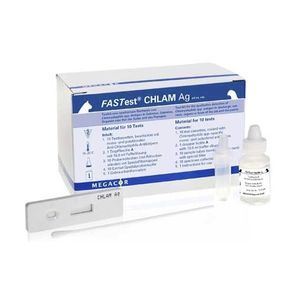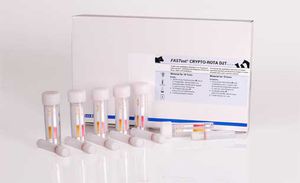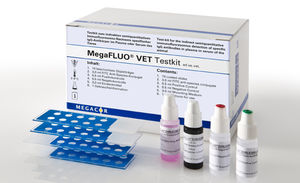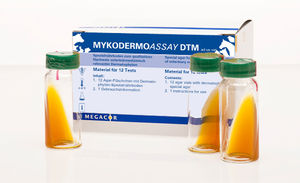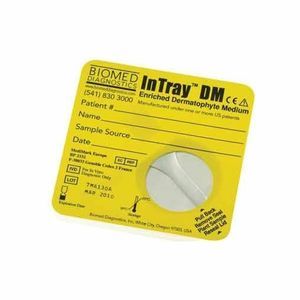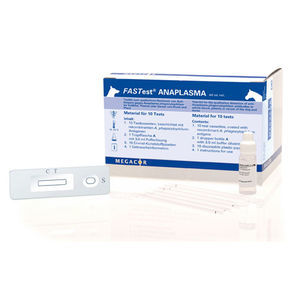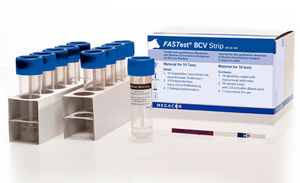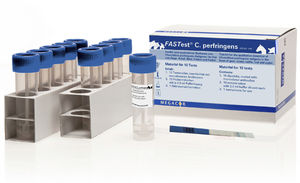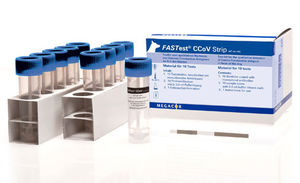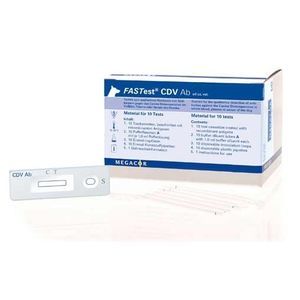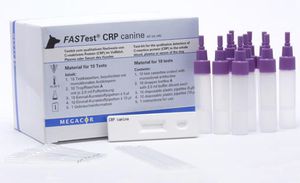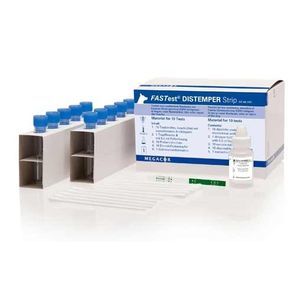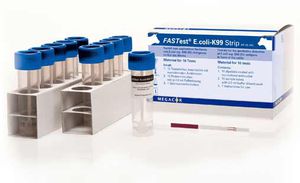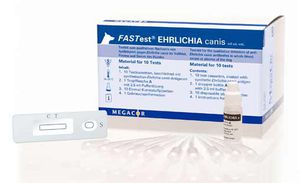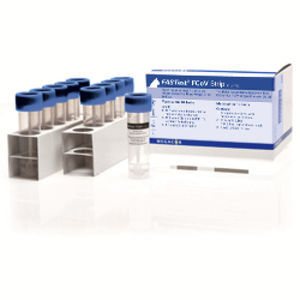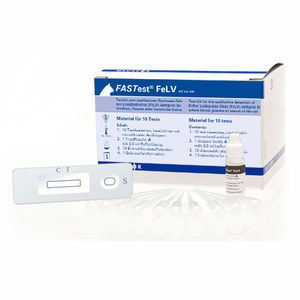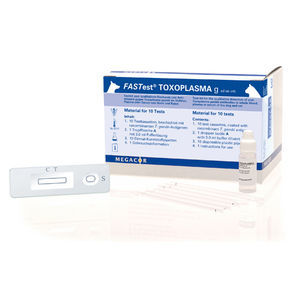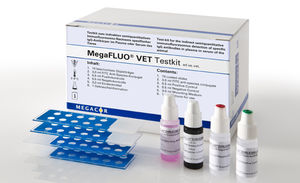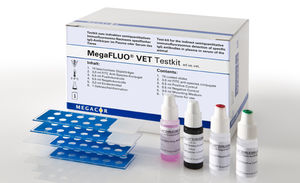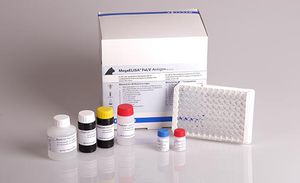
- Laboratory
- Laboratory medicine
- Rapid Lyme disease test
- MEGACOR Diagnostik
Rapid Lyme disease test FASTest® LYMEfor dogsfor horsesIgG
Add to favorites
Compare this product
Characteristics
- Applications
- for Lyme disease
- Patient type
- for dogs, for horses
- Tested parameter
- IgG, IgM
- Micro-organism
- Borrelia burgdorferi
- Sample type
- serum, plasma, whole blood
- Analysis mode
- immunochromatographic
- Result display time
15 min
- Specificity
98.6 %
- Sensitivity
90 %
Description
FASTest® LYME is a rapid immunochromatographic test for the qualitative detection of antibodies against Borrelia burgdorferi sensu lato in whole blood, plasma or serum of the dog.
Borreliosis caused by the borrelia species Borrelia burgdorferi sensu lato (B.b.s.l., genospecies B.b. sensu stricto, B. garinii, B. afzelii) is a worldwide spread infectious disease in dogs, other animals and in humans. Borrelia transmitting ticks (Ixodes ricinus, castor bean tick) are infected up to 30% with borrelia. In dogs from endemic areas, the antibody prevalence (up to 95%) correlates with dog ownership, dog’s outdoor time and sucking time of the ticks.
The definitive in-clinic diagnosis “Lyme borreliosis“ is often complex and can only be done by an analytical view combining many details like case history, clinical symptoms (e.g. lethargy, exhaustion, fever, swollen lymph glands, switching lameness, arthritis and neurological disorders) and especially by laboratory diagnostics. A successful therapy is based on an early detection of symptoms (first signs 2 to 5 months after tick exposition). Antibody detection (IgM before IgG) succeeds earliest in week 4 to 6 after tick exposition, after 3 months the antibody level is highest. A titre increase (seroconversion) is always seen before clinical signs of lameness and fever. Therefore, a negative test in an animal with clinical symptoms can rule out an acute borreliosis.
For the detection of antibodies, a two-step diagnostics is known to be golden standard. First step starts with an in-clinic IgM/IgG antibody screening test like FASTest® LYME. Due to the fact that dogs from endemic areas show antibodies against B.b.s.l. on principle,
Catalogs
No catalogs are available for this product.
See all of MEGACOR Diagnostik‘s catalogsRelated Searches
- Assay kit
- Blood assay kit
- Molecular biology reagent kit
- Serum assay kit
- Immunoassay assay kit
- Plasma assay kit
- Infectious disease detection kit
- Blood rapid diagnostic test
- Diagnostic reagent kit
- Laboratory reagent kit
- Rapid lateral flow test
- Immunoassay rapid diagnostic test
- Rapid virus test
- Serum rapid diagnostic test
- Plasma rapid diagnostic test
- Histology reagent kit
- Reagent medium reagent kit
- Infectious disease rapid diagnostic test
- Immunology reagent
- Whole blood rapid diagnostic test
*Prices are pre-tax. They exclude delivery charges and customs duties and do not include additional charges for installation or activation options. Prices are indicative only and may vary by country, with changes to the cost of raw materials and exchange rates.



